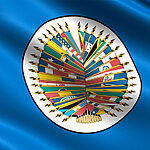Recognising and Addressing Workplace harassment
Everyone deserves to work in an environment free of harassment. However, the significant number of complaints lodged every year proves that this is still a serious problem. This two-part blog it’s all about recognising and addressing workplace harassment.
In this article, we will give you a general overview of the different types of misconduct that may result in harassment and what you, as a staff member, should do if you find yourself victim to any such abusive behaviour. Next month, we will look at how harassment complaints work from the perspective of the victim and examine the relevant investigative procedures, rights of the affected individual and possible remedies. So, make sure you don’t miss our next article!
The notion of harassment
Although the notion of workplace harassment may vary slightly depending on the policies in force in international organisations, according to the relevant case law this can be defined as any unwelcome conduct that might reasonably be expected or be perceived to cause offence or humiliation to another person, when such conduct interferes with work or creates an intimidating, hostile or offensive work environment.
Harassment may involve two individuals as well as a group, and in some cases the whole organisation may be held accountable. Although it occurs most commonly between two people linked by a hierarchical relationship due to the disparity in power or status (e.g. between a supervisor and their supervisee), harassment may occur between individuals of all levels and contract types. While typically involving a pattern of conduct, harassment may nevertheless take the form of a single incident.
As a general rule, whoever files a harassment complaint has the duty to substantiate his claim. It is important to note, however, that there is no obligation on the complainant to prove that the abusive behaviour actually occurred, it being sufficient to show that there is prima facie evidence to warrant the opening of an investigation into the matter. To make a finding of harassment, it is not necessary that the offender actually intended the behaviour to be offensive or humiliating, rather, the main parameter for assessing the existence of harassment is whether the affected individual perceived it as an offence.
As a matter of fact, as the ILOAT has recently held in Judgment No. 4142/2020, there is no need for the victim to prove that the perpetrator of these acts “intended to engage in harassment, the main factor being the perception that the person concerned may reasonably and objectively have of acts or remarks liable to demean or humiliate her or him” [9].
A demon with many faces
The reason why the definition of harassment is so broad is because this abusive conduct, as a wicked demon, may take many different forms.
The most common and yet less evident form of harassment is psychological harassment. This occurs when an individual or group engages in vexatious behaviour that manifests itself in the form of verbal comments, actions or gestures that have the effect of offending or demeaning another person. Psychological harassment may involve making humiliating or offensive remarks to another person, undermining another person’s reputation by gossip or ridicule, but also making it impossible for another person to perform their duties by, for example, withholding information or setting impossible deadlines.
It should be noted though that not all unpleasant situations can be defined as psychological harassment. Constructive criticism regarding work performance, giving instructions in an abrupt manner during stressful work situations, harsh discussions among colleagues, or even being in a bad mood from time to time, are not normally considered examples of abusive conduct.
It is also important to remember that performance management is not harassment. This is mirrored, for example, in ILOAT Judgment No. 4302/2020, where the Tribunal in dismissing the Complainant’s allegations of harassment, found that “the review of [the complainant’s] ePMDS was not in itself an official recognition of his supervisors’ wrong-doing or negligent mismanagement of the ePMDS process, as [it] was an integral aspect of that process which yielded the result which the complainant sought and accepted” [7].
A particularly despicable form of harassment, which can be either physical or psychological, but that usually results in a combination of the two, is sexual harassment. According to WHO internal policy on Preventing and Addressing Abusive Conduct, this can be defined as any unwelcome conduct of a sexual nature, that may occur in the workplace or in connection to work, and that might reasonably be expected or be perceived to cause offence or humiliation, when such conduct interferes with work, is made a condition of employment or creates an intimidating, hostile or offensive work environment.
Examples of sexual harassment may range from overtly vexatious conduct, such as unwelcome touching, patting, rubbing or brushing up against another person, to more insidious but no less offensive behaviour, such as sharing sexual or lewd anecdotes or jokes, making sexual comments about appearance, clothing or body parts, asking for sexual favours, or in its most serious form, sexual assault.
Sexual harassment can be so subtle that the United Nation Secretary-General’s bulletin (ST/SGB/2019/8) has defined it as “the manifestation of a culture of discrimination and privilege based on unequal gender relations and other power dynamics”. In order to address such behavior within its ranks and to complement the existing reporting mechanisms, the United Nations has launched a helpline[1] to enable staff to call out sexual harassment in the workplace. Open 24 hours a day, the helpline is a resource for UN personnel to speak confidentially with an impartial and trained individual who can provide information on protection, support and reporting mechanisms.
A unique form of harassment developed by the case law of international tribunals is institutional harassment. This particular form of misconduct implies the involvement of the entire organisational apparatus in the abusive behaviour.
According to well settled ILOAT jurisprudence, this can be defined as the “accumulation of repeated events and/or as a long series of examples of mismanagement and omissions by the organisation which deeply and adversely affected the complainant’s dignity and career objectives”.
The key to understanding institutional harassment lies in the identification of a pattern of events and behaviours that, although taken individually may be managerially justified, amount to harassment when considered as a whole. Institutional harassment is very difficult to prove and the fact that it is not addressed specifically in the policies of many international organisations does not help. However, in ILOAT Judgment No. 4378/2021, the Tribunal clarified that “[an organisation] cannot ignore that the case law of the Tribunal recognizes institutional harassment and that it should take this into account when interpreting its own rules.”
Key tips for Staff
If you have the feeling you’re being harassed at work, but you’re not sure whether you have an actual legal claim, here are few tips that may help you:
- Don’t be afraid to report. It is your fundamental right to work in an environment free from harassment and any other form of abusive conduct. Do not let fear take over and report promptly whenever you feel you are being the victim of harassment. Your health and dignity are at stake.
- Do not wait to report. Although there are no rigid time limits, it is important not to wait too long and report the abusive conduct when the events are still clear in your mind. Learn how to recognise those behaviours that may constitute harassment to report them quickly, and don’t forget that delays may result in the loss of evidence or in the inability to question the alleged offender or witnesses. The sooner the better.
- Be consistent in reporting the facts. According to ILOAT Judgment No. 4344/2020, the question as to whether harassment has occurred must be determined “in the light of a thorough examination of all the objective circumstances surrounding the events complained of”[3], so make sure you are consistent in the details. The more consistent the report, the more credible it will be in the eyes of the investigators.
- Apply for protection. If you feel that the time required to conduct the investigation and establish the harassment could adversely affect you or your claim, apply for immediate protection. The organisation, in order to prevent the reiteration of the abusive conduct and address the risk of retaliation, is required to take interim protective measures which may include, among others: the physical separation between you and the alleged offender, the institution of flexible working hours, and even the possibility of granting you special administrative leave.
- Provide all relevant information. Your harassment complaint will have a better chance of leading to investigation if you are precise in describing the abusive behaviour. Make sure to be extremely accurate in reporting the events and include as much detail as possible, such as: the name(s) of the alleged offender(s), the date(s) and location(s) these incidents took place, the names of any witnesses, and any other documentary evidence in support of your complaint.
- Keep inquiring about the status of your complaint. Harassment investigations, especially when the cases are very complex, can be quite time-consuming. However, keep in mind that most internal policies of international organisations provide time limits for investigations to make a finding or reach a conclusion. As per relevant international jurisprudence, delays by the administration in carrying out investigations often lead to increased moral damages.
- Seek legal advice. Each case of harassment is unique, and the abusive conduct of which you may be a victim may result in a combination of those listed above. If you’d like to discuss your case with experienced lawyers, please contact us. We can discuss the merits of your case and advise you on your next steps.
[1] The helpline can be reached at 1 917 367 8910 or, from peacekeeping missions, at 1212 78910. The helpline can also be reached at speakup@n.org.










